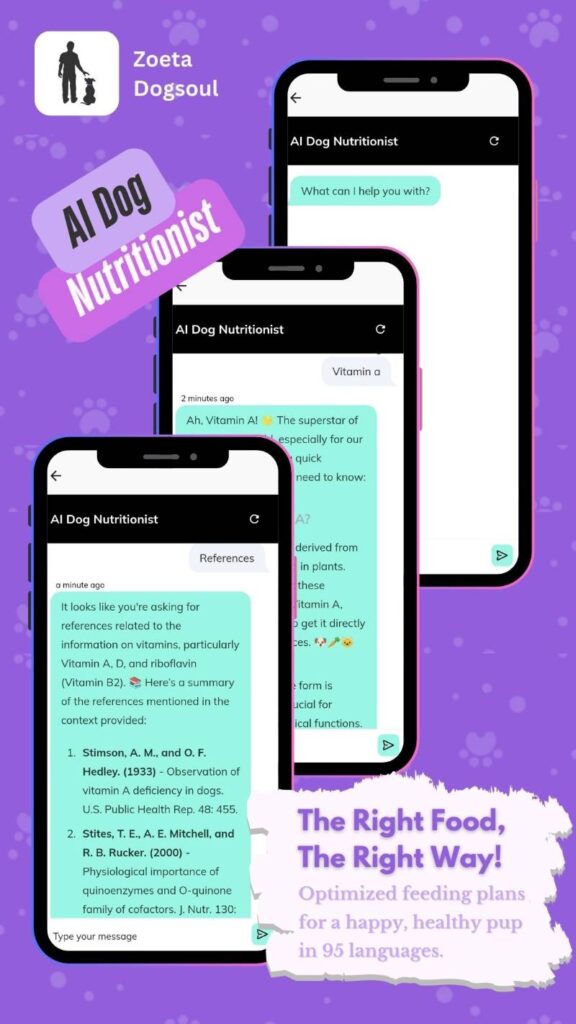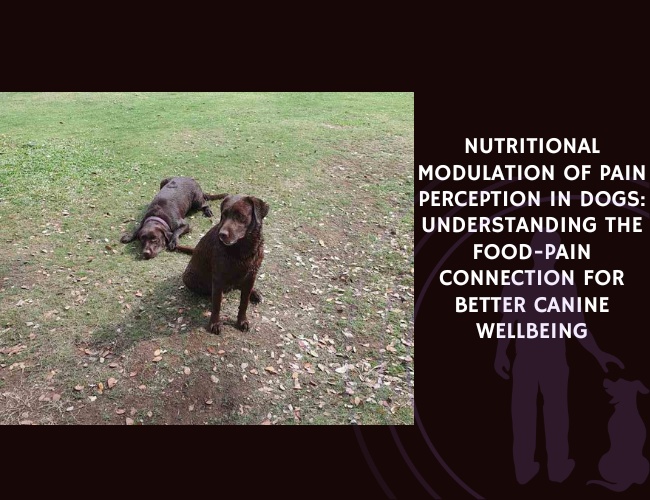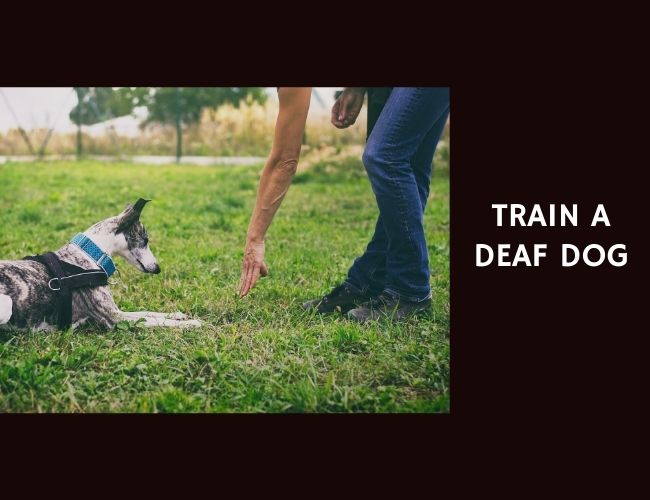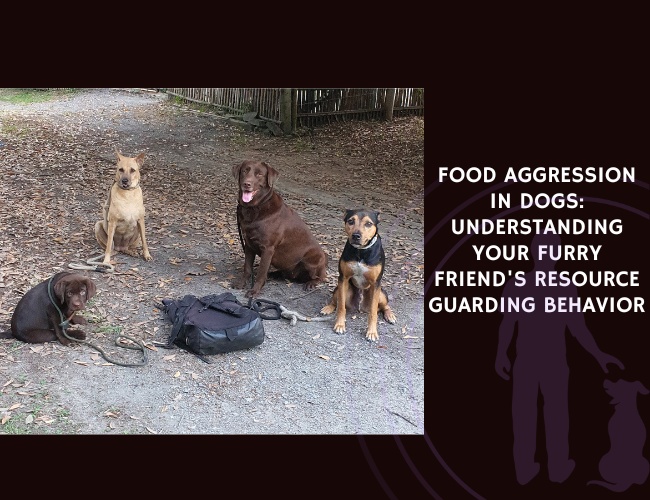Introduction: When Food Becomes Medicine for Your Furry Friend
Have you ever noticed your once-playful companion hesitating before jumping onto their favorite couch? Or perhaps you’ve wondered why your usually gentle dog suddenly guards their food bowl with unexpected intensity? These subtle changes might tell a deeper story—one where chronic pain quietly shapes your dog’s daily experience, and where nutrition could hold the key to relief.
The connection between what fills your dog’s bowl and how they experience pain represents one of the most promising frontiers in veterinary wellness. Just as we humans reach for anti-inflammatory foods when our joints ache, our canine companions can benefit from targeted nutritional strategies that address pain at its source. This isn’t just about managing symptoms; it’s about understanding how every meal can either fuel inflammation or help your furry friend find comfort.
Let us guide you through this fascinating intersection of nutrition and pain management, where science meets compassion, and where understanding these connections can transform your dog’s quality of life. Whether you’re caring for a senior dog with creaky joints or a younger pup showing mysterious behavioral changes, this knowledge empowers you to become your dog’s best advocate for comfort and wellbeing. 🐾
Character & Behavior: Decoding Your Dog’s Silent Language of Discomfort
Understanding the Subtle Signs Your Dog Can’t Tell You About
Your dog’s behavior speaks volumes, even when they can’t say “it hurts.” Unlike humans who can verbalize their discomfort, dogs communicate pain through a complex tapestry of behavioral changes that often masquerade as personality quirks or training issues. You might notice your usually enthusiastic walking partner now approaches the leash with less tail-wagging excitement, or your cuddle-loving companion suddenly prefers their own space.
The Hidden Language of Posture and Movement Dogs experiencing chronic pain become masters of compensation. You might observe your furry friend adopting unusual sitting positions—perhaps favoring one hip or sitting with their back legs splayed awkwardly to the side. These postural adaptations aren’t quirky personality traits; they’re sophisticated attempts to redistribute weight away from painful areas. Watch for the subtle shift in how they rise from lying down, perhaps using their front legs more than usual or taking several attempts to find a comfortable position.
Emotional Responses That Signal Physical Distress Chronic discomfort fundamentally alters your dog’s emotional landscape. That sudden snap when you reach for their collar? It might not be behavioral regression but rather a protective response to anticipated pain. Dogs with hidden discomfort often exhibit increased irritability, especially during handling or when approached while resting. This irritability isn’t defiance—it’s communication. They’re telling you, in the only way they can, that something doesn’t feel right.
Sleep Patterns as Windows to Wellbeing Just as chronic pain disrupts human sleep, your dog’s nighttime restlessness might signal underlying discomfort. You might notice them changing positions frequently, getting up to pace, or seeming unable to settle into their usual deep sleep. These disrupted sleep patterns create a vicious cycle: poor sleep intensifies pain perception, while increased pain further fragments their rest. If your dog who once slept soundly through the night now seems to patrol the house at 3 AM, their body might be searching for a position that offers relief.
The beauty of understanding these behavioral signs lies in early intervention. When you recognize that your dog’s “stubbornness” about climbing stairs might actually be joint pain, or that their newfound resource guarding could stem from the vulnerability that comes with chronic discomfort, you can address the root cause rather than just the symptom. 🧡
Vocalization & Communication: How Pain Changes Your Dog’s Voice
When Silence Speaks Louder Than Barks
Interestingly, dogs rarely vocalize chronic pain the way they might yelp from an acute injury. This evolutionary trait—hiding vulnerability from potential predators—means you need to listen for what your dog isn’t saying as much as what they are. The absence of their usual greeting bark, the reduction in playful growls during tug-of-war, or even changes in their breathing patterns can all signal discomfort.
The Paradox of Pain Communication You might expect a dog in pain to whimper or cry, but chronic discomfort often manifests as behavioral withdrawal rather than vocal expression. Your typically chatty companion might become notably quiet, while a usually reserved dog might develop new vocalizations—soft groans when lying down, sighs when shifting position, or even aggressive vocalizations when approached. These changes in their vocal repertoire reflect their attempt to navigate a world that has become unpredictably uncomfortable.
Reading Between the Whines When dogs do vocalize pain, it’s often situational and specific. Pay attention to vocalizations during particular movements—a soft grunt when jumping down from the bed, a brief whine when shaking after getting wet, or hesitation sounds before attempting stairs. These momentary vocalizations offer valuable diagnostic clues about the location and nature of their discomfort.
Training & Education: Reframing “Disobedience” Through the Lens of Pain
Why Your Well-Trained Dog Might Suddenly “Forget” Their Training
That moment when your impeccably trained dog suddenly “refuses” to sit on command or “stubbornly” won’t come when called might not be defiance at all. Chronic pain can make previously simple commands physically challenging or even impossible. Understanding this connection between pain and apparent training regression can revolutionize how you approach your dog’s education and behavior modification.
The Shutdown Response: When Pain Overwhelms Learning Dogs experiencing chronic discomfort often exhibit what trainers call “shutdown”—a state where they become unresponsive to cues, seem disconnected, or appear to have forgotten previously solid training. This isn’t willful disobedience; it’s cognitive overload. When the brain is processing pain signals, it has reduced capacity for learning and responding to environmental cues. Your dog isn’t ignoring you; their nervous system is simply prioritizing pain management over obedience.
Hyper-vigilance as a Pain Response Conversely, some dogs with chronic pain become hyper-vigilant, reacting intensely to stimuli that previously didn’t bother them. This heightened reactivity—barking at distant sounds, startling at sudden movements, or becoming defensive about personal space—reflects a nervous system on high alert. When you’re in constant discomfort, the world becomes a more threatening place, and minor disturbances feel like major threats.
Behavioral Relapse as a Diagnostic Tool One of the most telling signs of hidden pain is behavioral relapse despite consistent training progress. If your dog shows improvement with training but repeatedly relapses—especially with increased reactivity or avoidance behaviors—this pattern serves as a red flag for underlying physical issues. These relapses aren’t training failures; they’re your dog’s way of communicating that something beyond behavior needs attention.
The key to successful training when pain is present lies in recognizing these patterns and adapting your approach. Short, low-impact training sessions that accommodate physical limitations, coupled with medical intervention for the underlying pain, often yield dramatic improvements in both behavior and quality of life.
Nutritional Recommendations: Feeding for Comfort and Healing
The Anti-Inflammatory Diet Revolution for Canine Wellness
The food in your dog’s bowl can either fan the flames of inflammation or help extinguish them. This isn’t just about basic nutrition—it’s about strategic feeding that targets the inflammatory pathways underlying chronic pain. By understanding how specific nutrients influence pain perception, you can transform mealtime into a therapeutic intervention.
Omega-3 Fatty Acids: Nature’s Pain Modulators The superstar players in pain management nutrition are omega-3 fatty acids, particularly EPA (eicosapentaenoic acid) and DHA (docosahexaenoic acid). These powerful compounds work by inhibiting the production of inflammatory prostaglandins while promoting the synthesis of specialized pro-resolving mediators—molecules that actively help resolve inflammation rather than just suppressing it. Think of omega-3s as peacekeepers in your dog’s body, calming inflammatory storms and restoring cellular harmony.
Sources of omega-3s that work particularly well for dogs include:
- Cold-water fish like salmon, sardines, and mackerel
- Fish oil supplements specifically formulated for dogs
- Green-lipped mussel, which provides both omega-3s and beneficial glycosaminoglycans
- Algae-based supplements for dogs with fish allergies
The Glycemic Index Connection Just as in humans, blood sugar spikes can fuel systemic inflammation in dogs. High-glycemic foods—those that rapidly elevate blood glucose—trigger inflammatory cascades that can amplify pain perception. By choosing low-glycemic options, you help maintain stable blood sugar levels, reducing inflammatory responses throughout your dog’s body.
Low-glycemic nutrition strategies include:
- Replacing refined grains with whole grains or grain-free alternatives
- Incorporating sweet potatoes instead of white potatoes
- Adding fiber-rich vegetables to slow glucose absorption
- Choosing complex carbohydrates over simple sugars
The Hidden Inflammation Triggers in Your Dog’s Bowl Food allergens and sensitivities can create a perfect storm of inflammation, affecting not just the gut but potentially triggering joint pain and skin issues—what researchers call the “gut-skin-joint axis.” Common inflammatory triggers might include certain proteins, grains, or additives that your individual dog’s system perceives as threats. This immune response generates inflammation that can manifest as seemingly unrelated pain symptoms.

Supplement Strategies: Evidence-Based Support for Pain Relief
Building Your Dog’s Anti-Pain Arsenal
While a balanced diet forms the foundation, targeted supplements can provide additional support for dogs experiencing chronic discomfort. The key lies in choosing evidence-based options and understanding how they work synergistically with dietary interventions.
Turmeric/Curcumin: The Golden Spice of Relief Curcumin, the active compound in turmeric, offers powerful anti-inflammatory effects by downregulating inflammatory factors like COX-2 and TNF-α. This golden spice doesn’t just mask pain—it addresses the inflammatory processes at their source. For optimal absorption, curcumin should be combined with black pepper (piperine) and a healthy fat, creating what’s known as “golden paste” in the holistic veterinary community.
When introducing turmeric to your dog’s regimen:
- Start with small doses to assess tolerance
- Mix with coconut oil for enhanced absorption
- Monitor for any digestive upset
- Consider standardized curcumin supplements for more precise dosing
CBD: The Controversial Game-Changer Cannabidiol (CBD) has emerged as a promising option for canine pain management, with research showing it can improve cytokine expression and oxidative status in osteoarthritic dogs. While the science is still evolving, many dogs show remarkable improvement in mobility and comfort with appropriate CBD supplementation. The key is choosing high-quality, third-party tested products specifically formulated for dogs.
Boswellia Serrata: Ancient Wisdom for Modern Pain This traditional anti-inflammatory herb works by inhibiting leukotrienes—inflammatory molecules that contribute to joint pain and stiffness. Boswellia’s gentle yet effective action makes it particularly suitable for long-term use in managing chronic conditions.
The Synergy Approach Rather than relying on a single supplement, consider a synergistic approach where multiple compounds work together. For example, combining omega-3s with curcumin and Boswellia can target inflammation through multiple pathways, potentially offering more comprehensive relief than any single supplement alone.
Health Concerns: Common Pain Syndromes and Their Nutritional Management
Identifying and Addressing the Root Causes of Discomfort
Understanding the specific pain syndromes affecting your dog allows for more targeted nutritional interventions. Each condition has unique characteristics and responds differently to dietary modifications.
Joint Pain: The Silent Epidemic Osteoarthritis affects a staggering number of dogs, yet often goes undiagnosed until significant damage has occurred. Dogs with joint pain might show mobility hesitancy, struggle with previously easy movements, or develop compensatory gaits that stress other body parts. The inflammatory nature of arthritis makes it particularly responsive to nutritional intervention.
Nutritional strategies for joint pain include:
- Maintaining optimal body weight to reduce joint stress
- Supplementing with glucosamine and chondroitin for cartilage support
- Increasing omega-3 intake to reduce joint inflammation
- Adding antioxidant-rich foods to combat oxidative stress
Dental Pain: The Hidden Agony Dental pain profoundly impacts quality of life yet often goes unnoticed until severe. Dogs with dental discomfort might drop food while eating, chew on one side, or develop sudden food aversions. They might also show mouth guarding behaviors or aggression when their face is approached.
Nutritional support for dental health includes:
- Choosing appropriate food textures that don’t exacerbate pain
- Adding dental-supportive supplements like CoQ10
- Ensuring adequate vitamin C for gum health
- Considering softer food options during acute pain episodes
Gastrointestinal Discomfort: When the Gut-Brain Axis Goes Awry Chronic GI issues create a cascade of problems extending far beyond digestive upset. The gut-brain axis means that intestinal inflammation can influence mood, pain perception, and overall behavior. Dogs with GI discomfort might exhibit irritability, postural changes (hunched back), and disrupted sleep patterns.
Gut-healing nutrition strategies include:
- Incorporating prebiotic fibers to support beneficial bacteria
- Adding probiotic supplements to restore microbial balance
- Choosing easily digestible proteins
- Eliminating potential food allergens through elimination diets
Silent. Subtle. Painful.
Pain wears a thousand disguises.
Your dog won’t limp for sympathy or whimper for help—they’ll shift, hesitate, withdraw. What looks like stubbornness is often strategy: an invisible calculation to avoid discomfort. When they pause before stairs or shrink from your touch, they’re not being difficult—they’re asking for understanding.
Behaviour changes aren’t bad—they’re messages.
Snapping at the collar, refusing to sit, guarding a once-shared space—these aren’t dominance issues. They’re protective reactions born from anticipation of pain. Learn to listen not just with your ears, but with empathy. Pain doesn’t just hurt—it confuses, frustrates, and reshapes your dog’s emotional map.



The food bowl holds more than calories—it holds relief.
Every bite your dog takes can feed inflammation or ease it. Nutrients like omega-3s don’t just nourish—they intercept pain signals, restore cellular calm, and soothe aching joints. Healing begins not at the vet—but at the bowl, where science meets compassion, one meal at a time.
Performance & Activities: Adapting Exercise to Support Healing
Movement as Medicine—When Done Right
Exercise remains crucial for dogs with chronic pain, but the approach must be thoughtful and adaptive. The right type and amount of movement can actually reduce pain through multiple mechanisms: maintaining joint flexibility, supporting muscle strength, and promoting the release of natural endorphins.
The Low-Impact Revolution Swimming and hydrotherapy offer ideal exercise for painful dogs, providing resistance training without joint stress. The buoyancy of water supports body weight while the resistance builds muscle. Even dogs who initially resist water often come to love these sessions as they associate them with pain relief.
Mental Stimulation When Physical Activity Is Limited When pain restricts physical activity, mental enrichment becomes even more critical. Puzzle feeders, scent work, and gentle training exercises can provide fulfillment without exacerbating discomfort. This mental engagement also helps prevent the depression that often accompanies chronic pain.
Lifestyle & Environment: Creating a Pain-Friendly Home
Environmental Modifications for Maximum Comfort
Your home environment can either challenge or support a dog dealing with chronic pain. Simple modifications can dramatically improve your dog’s daily comfort and independence.
The Comfort Zone Approach Creating multiple comfortable resting areas throughout your home allows your dog to find relief without having to travel far. Orthopedic beds with memory foam provide crucial joint support, while heated beds can soothe aching muscles. Position these rest areas away from high-traffic zones to reduce disturbance-related stress.
Accessibility Adaptations Ramps instead of stairs, raised food bowls to reduce neck strain, and non-slip surfaces can all help your dog navigate their environment with less pain. These modifications aren’t just about physical comfort—they preserve your dog’s dignity and independence, crucial factors in maintaining quality of life.
Senior Care: Special Considerations for Aging Dogs
When Multiple Systems Need Support
Senior dogs often deal with multiple overlapping pain conditions, requiring a comprehensive approach to nutritional and lifestyle management. Age-related changes in metabolism, digestion, and nutrient absorption mean that senior dogs need specially tailored nutritional strategies.
The Senior Supplement Protocol Older dogs benefit from a more robust supplement regimen that addresses multiple age-related concerns:
- Enhanced omega-3 supplementation for cognitive and joint support
- Increased antioxidants to combat age-related oxidative stress
- Digestive enzymes to support declining digestive efficiency
- Medium-chain triglycerides (MCTs) for cognitive support
Monitoring and Adjusting Senior dogs require more frequent reassessment of their pain management strategies. What works at age 10 might need adjustment by age 11. Regular pain scoring using tools like the Helsinki Chronic Pain Index helps track changes and guide modifications to their nutritional and supplement protocols.
The Diagnostic Journey: Using Behavior to Uncover Hidden Pain
Becoming Your Dog’s Health Detective
You know your dog better than anyone, making you uniquely qualified to detect subtle changes that might indicate pain. Behavioral screening tools can help quantify these observations, providing valuable information for your veterinary team.
Keeping a Behavior Diary Documenting daily observations creates a powerful diagnostic tool. Note changes in:
- Activity levels at different times of day
- Responses to specific movements or activities
- Appetite and eating behaviors
- Sleep patterns and positions
- Social interactions with family members and other pets
The Power of Video Evidence Recording your dog’s movement, especially during activities that seem to cause hesitation or discomfort, provides invaluable information for veterinary assessment. Slow-motion video can reveal subtle gait abnormalities invisible to the naked eye.
Conclusion: Is a Pain-Free Life Possible for Your Dog?
Embracing a Holistic Approach to Canine Comfort
The journey from recognizing your dog’s hidden pain to implementing effective nutritional strategies might seem overwhelming, but remember—every small step makes a difference. You don’t need to revolutionize your dog’s entire lifestyle overnight. Start with one change, perhaps adding omega-3s to their diet or raising their food bowl, and build from there.
The intersection of nutrition and pain management offers hope for dogs who might otherwise suffer in silence. By understanding how food can either fuel or fight inflammation, recognizing the subtle signs of discomfort, and working with your veterinary team to implement comprehensive management strategies, you can dramatically improve your furry friend’s quality of life.
Your dog’s pain might be silent, but your response doesn’t have to be. Armed with knowledge about nutritional modulation of pain, behavioral indicators of discomfort, and evidence-based supplement strategies, you’re equipped to advocate for your dog’s comfort and wellbeing. Whether you’re managing established arthritis in a senior dog or addressing mysterious behavioral changes in a younger companion, remember that pain is not an inevitable part of aging or an untreatable burden.
The most powerful tool in your arsenal isn’t any single supplement or dietary change—it’s your commitment to understanding and responding to your dog’s needs. By viewing behavior through the lens of possible pain, approaching nutrition as medicine, and creating an environment that supports healing, you’re not just managing symptoms; you’re transforming your dog’s entire experience of life.
As you embark on this journey of nutritional pain management, remember that you’re not alone. Veterinary nutritionists, holistic practitioners, and a growing body of research support your efforts. Every meal you prepare with anti-inflammatory ingredients, every supplement you carefully measure, and every environmental modification you make is an act of love—a tangible way of saying, “I see your pain, and I’m here to help.”
The road to comfort might have twists and turns, requiring adjustments and patience, but the destination—a dog who moves with greater ease, sleeps more soundly, and engages with life more fully—makes every effort worthwhile. After all, our dogs give us their unwavering loyalty and unconditional love; helping them find freedom from pain is the least we can do in return. 🐾
Next Steps for Your Journey:
- Schedule a comprehensive pain assessment with your veterinarian
- Begin a behavior diary to track subtle changes
- Research high-quality omega-3 supplements appropriate for your dog’s size
- Consider consulting with a veterinary nutritionist for a personalized diet plan
- Connect with support groups for owners managing canine chronic pain
Your dog’s comfort journey starts with a single step—and you’ve already taken it by seeking this knowledge. Here’s to many more pain-free tail wags in your future together. 🧡










